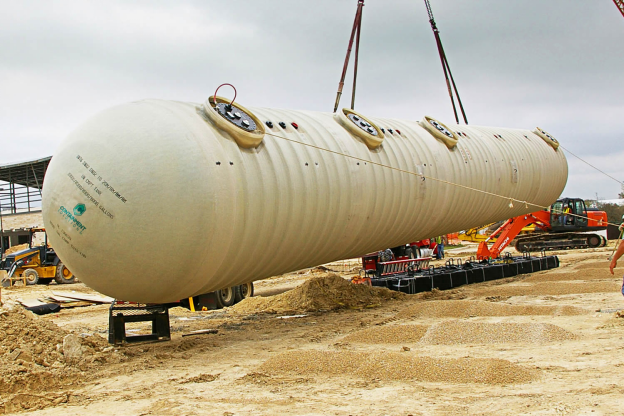While both steel and fiberglass tank manufacturers have competed fiercely over the years to capture the North American fuel retail market, in the last couple of decades, fiberglass tank manufacturers have clearly managed to gain a stronger foothold , especially when it comes to underground installations.

As of 2018, more than 75 percent of fuel retailers operating in the U.S had fiberglass underground storage tanks (USTs) installed at their sites. In Canada, the use of fiberglass underground storage tanks has been recorded at an even higher rate.
So what exactly has led the way for this strong adoption of fiberglass USTs by the world’s largest fuel retail market?
Factors responsible for the unparalleled growth of fiberglass USTs in the North American region
Several factors have contributed to the massive share of fiberglass USTs in the North American fuel retail market. The main ones include:
- Aging population of single-wall steel tanks
- Changing composition of liquid fuels
- Unwillingness on the part of private UST insurance companies to insure steel tanks
Let’s take a look at each of these factors one by one.
Aging population of single-wall steel tanks
By the end of 1980s, it became quite clear that single-wall steel tanks had very little to offer in terms of corrosion protection and that they weren’t safe for storing liquid fuel. The concerns were believed to be even more pronounced for aging single-wall steel tanks. The EPA had to intervene.
Federal regulations were passed, requiring gas station owners to replace their single-wall steel tanks with jacketed steel or fiberglass underground storage tanks. UST operators were given a deadline of 10 years. With fiberglass storage tanks being less expensive than jacketed steel tanks, most facility owners chose them for their newer installations.
Changing composition of liquid fuels
Fuel sold at gas stations today has been impacted by many formulation changes in the last 30 years:
- It contains ethanol
- It’s free from lead and MTBE additives
- It contains lower sulfur content (in case of diesel fuel)
All these changes have made retail-grade fuel more corrosive than ever.
Since fiberglass underground storage tanks have a proven performance record for corrosion resistance, it’s easy to understand why both small and large fuel retailers in North America prefer to use these tanks for their fueling facilities.
Unwillingness on the part of private UST insurance companies to insure steel tanks
Many gas station owners in the U.S use tank insurance to demonstrate their financial responsibility to concerned authorities. Proof of financial responsibility is a major requirement stated in federal law to open and run a gas station in the country.
Recently, private UST insurance companies have shown increased reluctance to insure steel tanks, prompting gas station owners to install fiberglass underground storage tanks, which are easier to get insured for.
What type of underground storage tank do you use at your gas station?
If you’re interested in installing a fiberglass underground storage tank or jacketed steel tank for your facility, feel free to contact; the Kennedy Company will be happy to help you with your project.
John W. Kennedy Company is your one stop shop for gas station equipment and supplies. We sell gas station breakaways, nozzle swivels, pipe fittings, service station hardware, shop management systems, underground storage tanks and everything else you need to keep your gas station operational, compliant, safe and efficient. Visit our online store to learn more about our product range.




